Hybrid Cell Structure for Wideband CMUT: Design Method and Characteristic Analysis
Abstract
:1. Introduction
2. CMUT Frequency Band Impact Analysis
2.1. CMUT Basic Structure and Its Main Parameters
2.2. CMUT Cell Frequency Band Impact Analysis
2.3. CMUT Frequency Band Impact Analysis
2.3.1. Finite Element Simulation Analysis of Wideband CMUT
2.3.2. Bandwidth Performance Analysis of Wideband CMUT
3. Wideband CMUT Design Method
4. Design and Analysis of Wideband CMUT
4.1. Air Domain Wideband CMUT Structural Design and Finite Element Analysis
4.2. Waters Domain Wideband CMUT Structural Design and Finite Element Analysis
5. Conclusions
Author Contributions
Funding
Conflicts of Interest
References
- Shi, K.; Guo, Y. Phased Array Ultrasonic Imaging and Testing; Higher Education Press: Beijing, China, 2010; pp. 3–7. [Google Scholar]
- Savoia, A.S.; Caliano, G.; Pappalardo, M. A CMUT probe for medical ultrasonography: From microfabrication to system integration. IEEE Trans. Ultrason. Ferroelectr. Freq. Control 2012, 59, 1127–1138. [Google Scholar] [CrossRef] [PubMed]
- Xue, H.; Hu, Y.; Wang, Q.M. Broadband piezoelectric energy harvesting devices using multiple bimorphswith different operating frequencies. IEEE Trans. Ultrason. Ferroelectr. Freq. Control 2008, 55, 2104–2108. [Google Scholar] [PubMed]
- Zhang, Q.; Cicek, P.V.; Allidina, K.; Nabki, F.; El-Gamal, M.N. Surface-Micromachined CMUT Using Low-Temperature Deposited Silicon Carbide Membranes for Above-IC Integration. J. Microelectromech. Syst. 2014, 23, 482–493. [Google Scholar] [CrossRef]
- Gurun, G.; Tekes, C.; Zahorian, J.; Xu, T.; Satir, S.; Karaman, M.; Hasler, J.; Degertekin, F.L. Single-chip CMUT-on-CMOS front-end system for real-time volumetric IVUS and ICE imaging. IEEE Trans. Ultrason. Ferroelectr. Freq. Control 2014, 61, 239–250. [Google Scholar] [CrossRef] [PubMed] [Green Version]
- Fouan, D.; Bouakaz, A. Investigation of Classical Pulse Sequences for Contrast-Enhanced Ultrasound Imaging With a cMUT Probe. IEEE Trans. Ultrason. Ferroelectr. Freq. Control 2016, 63, 1496–1504. [Google Scholar] [CrossRef] [PubMed]
- Wang, H.; Wang, X.; He, C.; Xue, C. Design and Performance Analysis of Capacitive Micromachined Ultrasonic Transducer Linear Array. Micromachines 2014, 5, 420–431. [Google Scholar] [CrossRef] [Green Version]
- Hall, N.A.; Guldiken, R.O.; Mclean, J.; Degertekin, F.L. Modeling and Design of Cmuts Using Higher Order Vibration Modes Capacitive Micromachined Ultrasonic Transducers. In Proceedings of the IEEE Ultrasonics Symposium, Montreal, QC, Canada, 23–27 August 2004; pp. 260–263. [Google Scholar]
- Bayram, C.; Olcum, S.; Senlik, M.N.; Atalar, A. Bandwidth Improvement in a Cmut Array with Mixed Sized Elements. In Proceedings of the Ultrasonics Symposium, Rotterdam, The Netherlands, 18–21 September 2005; pp. 1956–1959. [Google Scholar]
- Olcum, S.; Atalar, A.; Koymen, H.; Senlik, M.N. Stagger Tuned Cmut Array for Wideband Airborne Applications. In Proceedings of the Ultrasonics Symposium, Vancouver, BC, Canada, 2–6 October 2006; pp. 2377–2380. [Google Scholar]
- Manzanares, A.O.; Espinosa, F.M.D. Air-coupled MUMPs capacitive micromachined ultrasonic transducers with resonant cavities. Ultrasonics 2012, 52, 482–489. [Google Scholar] [CrossRef] [PubMed]
- Apte, N.; Park, K.K.; Nikoozadeh, A.; Khuri-Yakub, B.T. Bandwidth and Sensitivity Optimization in Cmuts for Airborne Applications. In Proceedings of the IEEE International Ultrasonics Symposium, Chicago, IL, USA, 3–6 September 2014; pp. 166–169. [Google Scholar]
- Adelegan, O.J.; Yamaner, F.Y.; Oralkan, O. Design and Implementation of Wideband CMUTs for Airborne Applications—Preliminary Results. In Proceedings of the IEEE International Ultrasonics Symposium, Kobe, Japan, 22–25 October 2018; pp. 1–4. [Google Scholar]
- Zhang, H.; Liang, D.; Wang, Z.; Ye, L.; Rui, X.; Zhang, X. Fabrication and Characterization of a Wideband Low-Frequency CMUT Array for Air-Coupled Imaging. IEEE Sens. J. 2020, 20, 14090–14100. [Google Scholar] [CrossRef]
- Chee, R.K.; Zhang, P.; Maadi, M.; Zemp, R.J. Multifrequency Interlaced CMUTs for Photoacoustic Imaging. IEEE Trans. Ultrason. Ferroelectr. Freq. Control 2017, 64, 391–401. [Google Scholar] [CrossRef] [PubMed]
- Maadi, M.; Greenlay, B.; Ceroici, C.; Zemp, R.J. Multi-Frequency CMUT Imaging Arrays for Multi-Scale Imaging and Imaging-Therapy Applications. In Proceedings of the Ultrasonics Symposium, Washington, DC, USA, 6–9 September 2017; pp. 1–3. [Google Scholar]
- Pun, S.H.; Yu, Y.; Zhang, J.; Wang, J.; Cheng, C.H.; Lei, K.F.; Yuan, Z.; Mak, P.U. Monolithic Multi-band CMUTs for Photoacoustic Computed Tomography (PACT) with in vivo Biological Tissue Imaging. IEEE Trans. Ultrason. Ferroelectr. Freq. Control 2018, 65, 465–475. [Google Scholar] [CrossRef] [PubMed]
- Lijun, W.; Hongliang, W.; Tao, L. Design and finite element analysis of 10MHz capacitive ultrasonic transducer. Electron. Meas. Technol. 2020, 43, 155–159. [Google Scholar]
- Zhang, R.; Zhang, W.; He, C.; Zhang, Y.; Song, J.; Xue, C. Underwater Imaging Using a 1 × 16 CMUT Linear Array. Sensors 2016, 16, 312. [Google Scholar] [CrossRef] [PubMed] [Green Version]
- Choi, W.Y.; Lee, C.H.; Kim, Y.H.; Park, K.K. Comparison of Si3N4-SiO2 and SiO2 Insulation Layer for Zero-Bias CMUT Operation Using Dielectric Charging Effects. IEEE Trans. Ult Rasonics Ferroelectr. Freq. Control 2020, 67, 879–882. [Google Scholar] [CrossRef] [PubMed]
- Jucai, L. Study on the Charge Effect of Capacitive Micromachined Ultrasonic Transducers; Henan University: Kaifeng, China, 2020. [Google Scholar]
- Xiaonan, Z. Study on Air-Coupled Capacitive Micromachined Ultrasonic Transducers. Master’s Thesis, Tianjin University, Tianjin, China, 2017. (In Chinese). [Google Scholar]
- Hongliang, W. Research on the Working Mechanism and Application Foundation of CMUT and CMUT Array; Tianjin University: Tianjin, China, 2016. [Google Scholar]
- Wygant, I.O.; Kupnik, M.; Khuri-Yakub, B.T. Analytically calculating membrane displacement and the equivalent circuit model of a circular CMUT cell. In Proceedings of the 2008 IEEE Ultrasonics Symposium, Beijing, China, 2–5 November 2008; pp. 2111–2114. [Google Scholar]
- Khuri-Yakub, B.T.; Oralkan, Ö. Capacitive micromachined ultrasonic transducers for medical imaging and therapy. J. Micromech. Microeng. 2011, 21, 054004. [Google Scholar] [CrossRef] [PubMed]
- Brenner, K.; Ergun, A.S.; Firouzi, K.; Rasmussen, M.F.; Stedman, Q.; Khuri-Yakub, B.P. Advances in Capacitive Micromachined Ultrasonic Transducers. Micromachines 2019, 10, 152. [Google Scholar] [CrossRef] [PubMed] [Green Version]

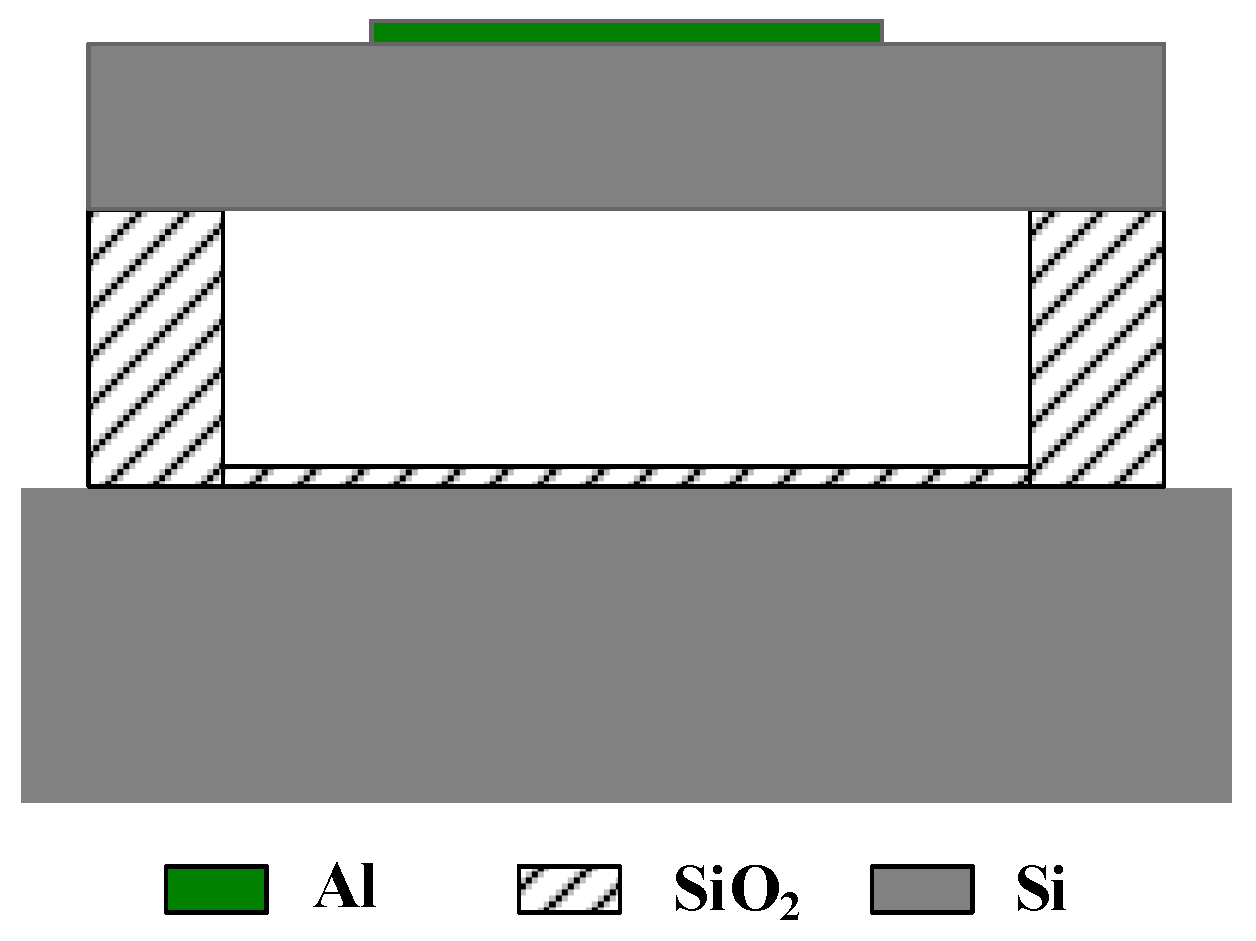

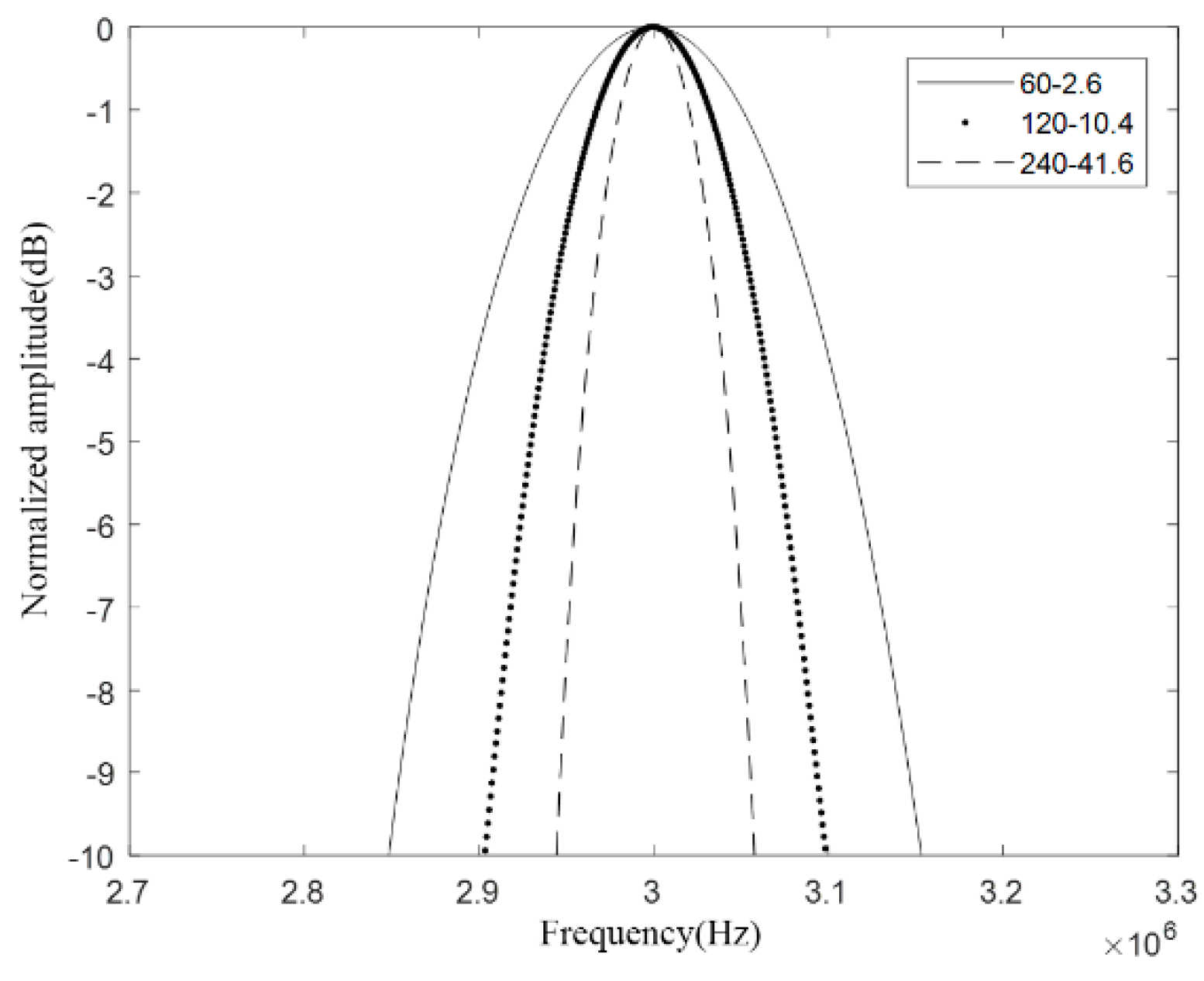

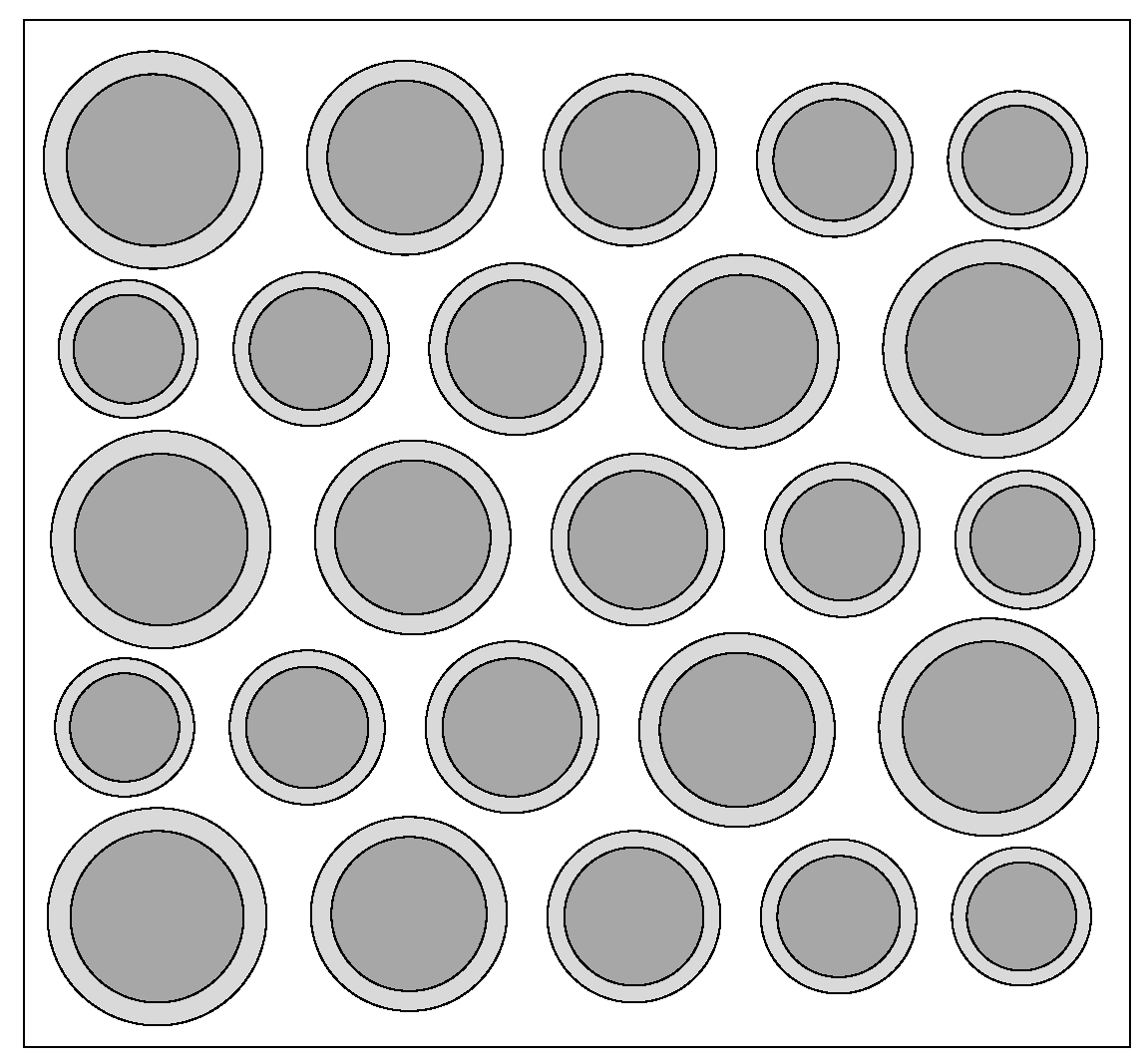

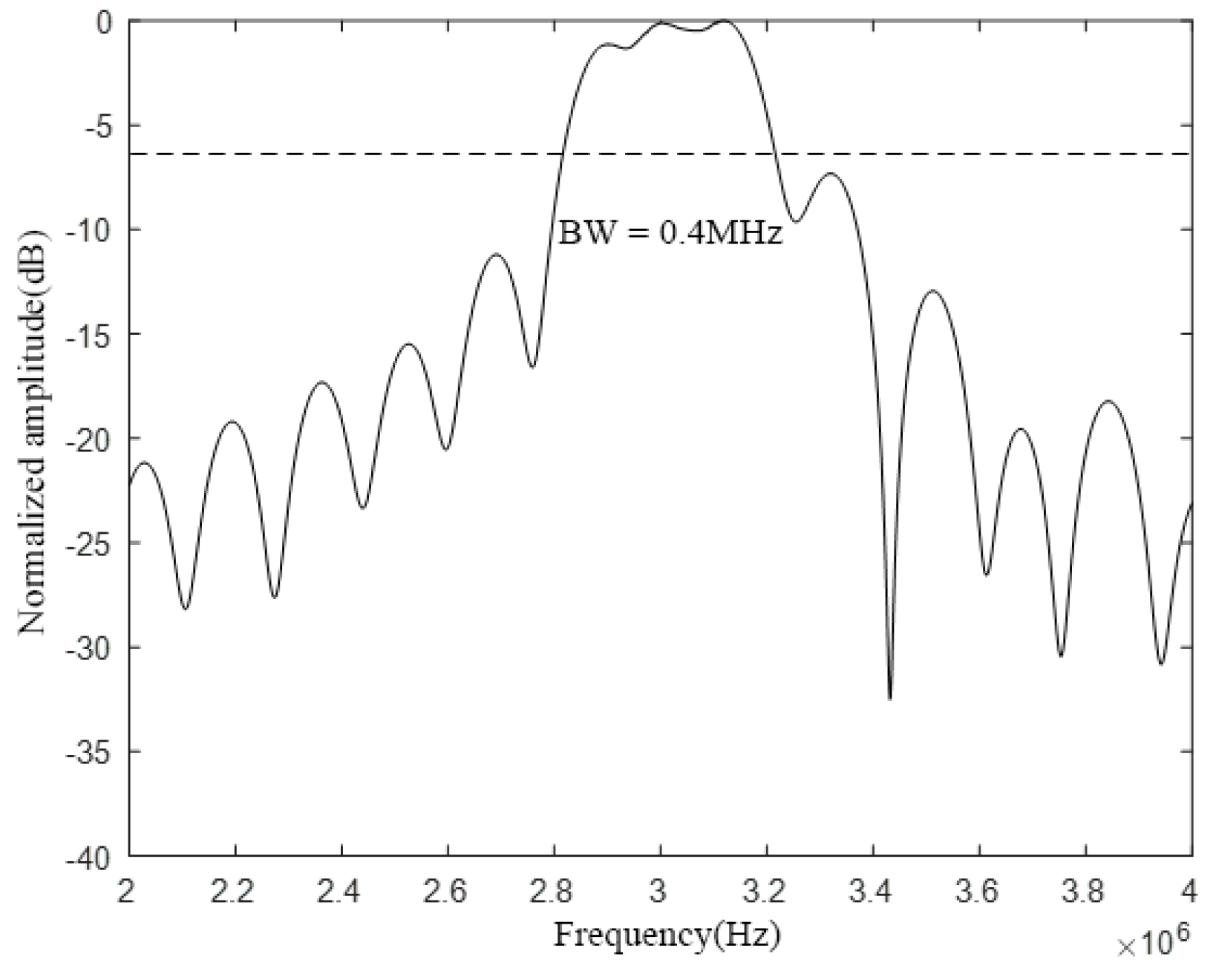
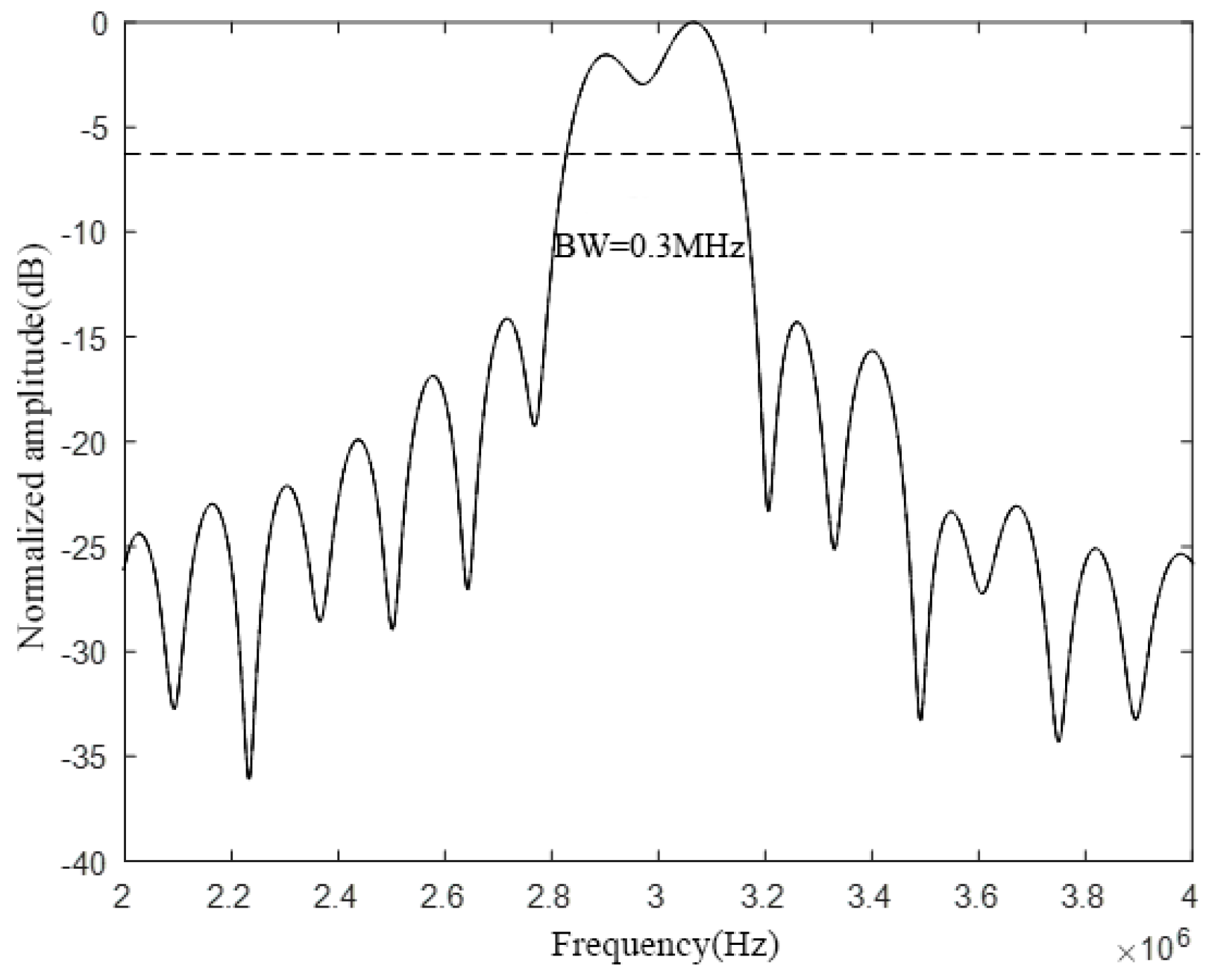
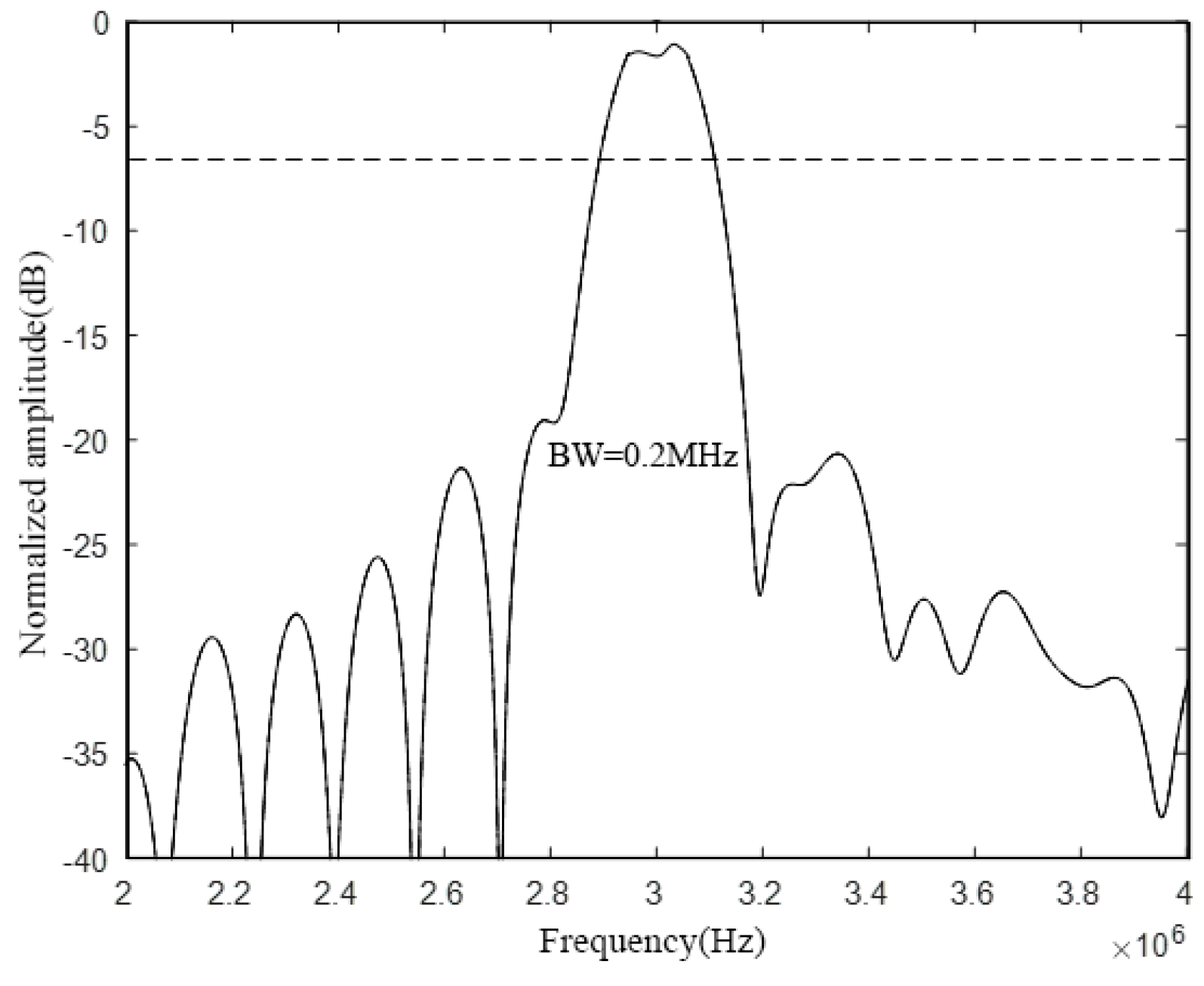
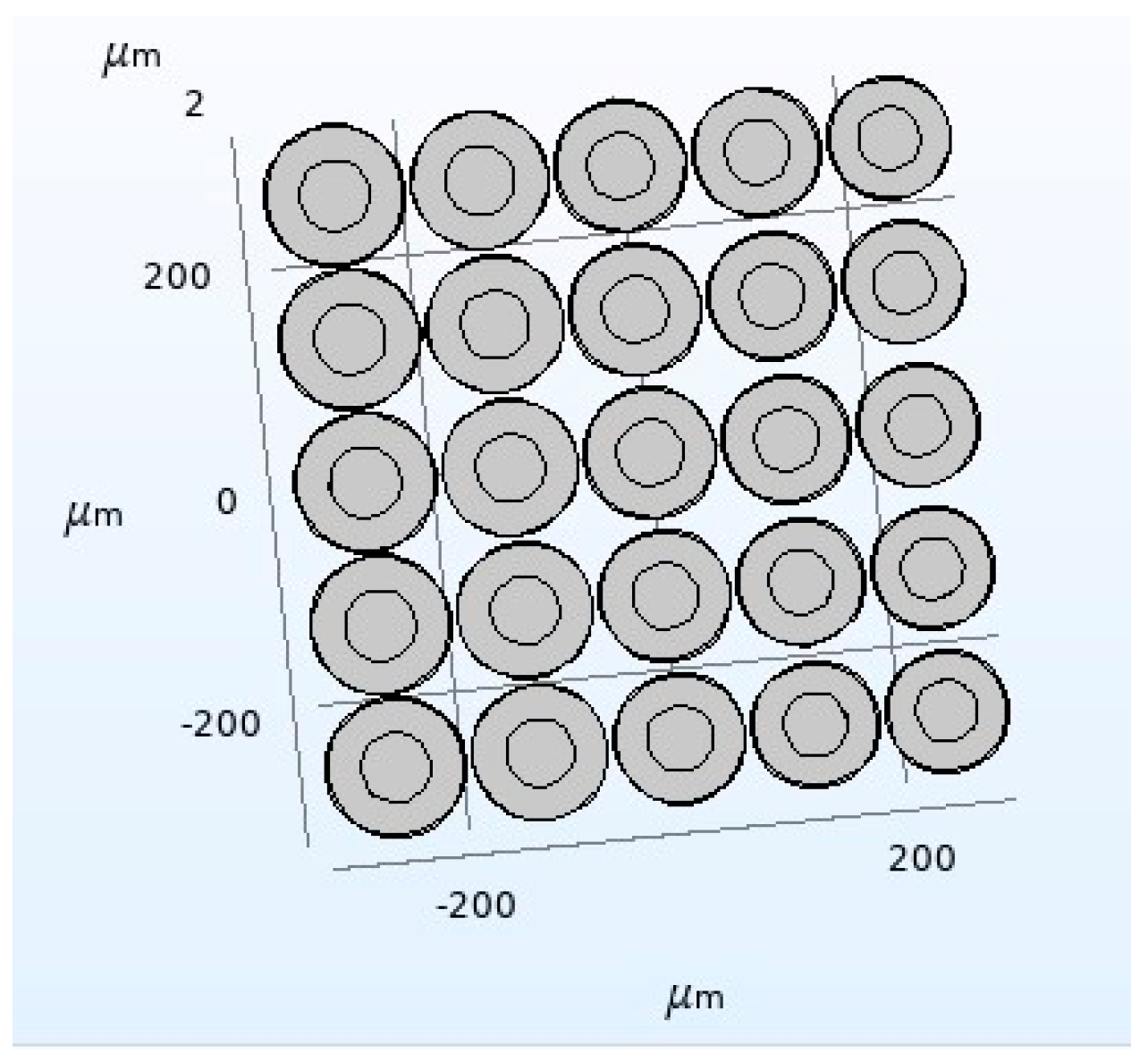
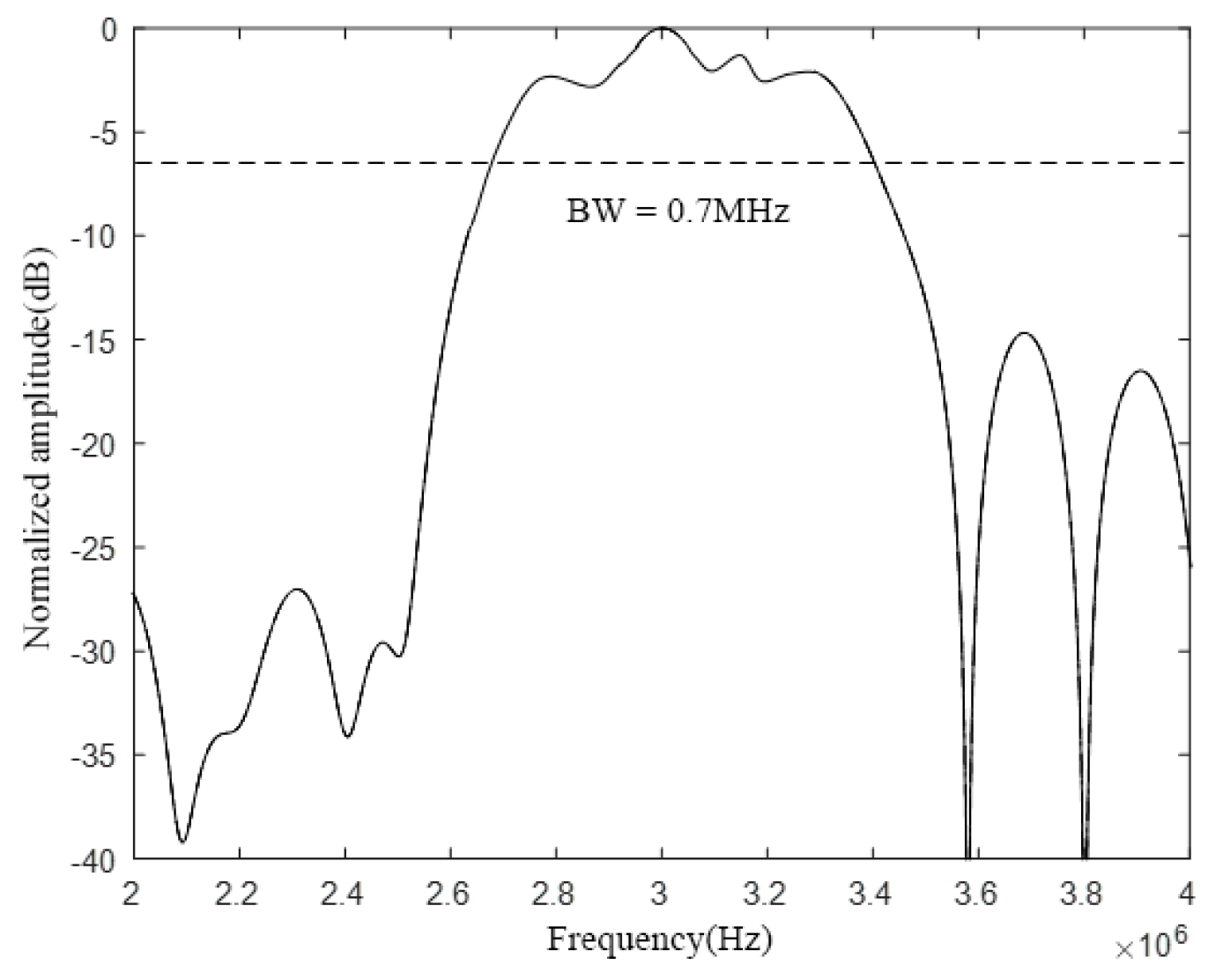

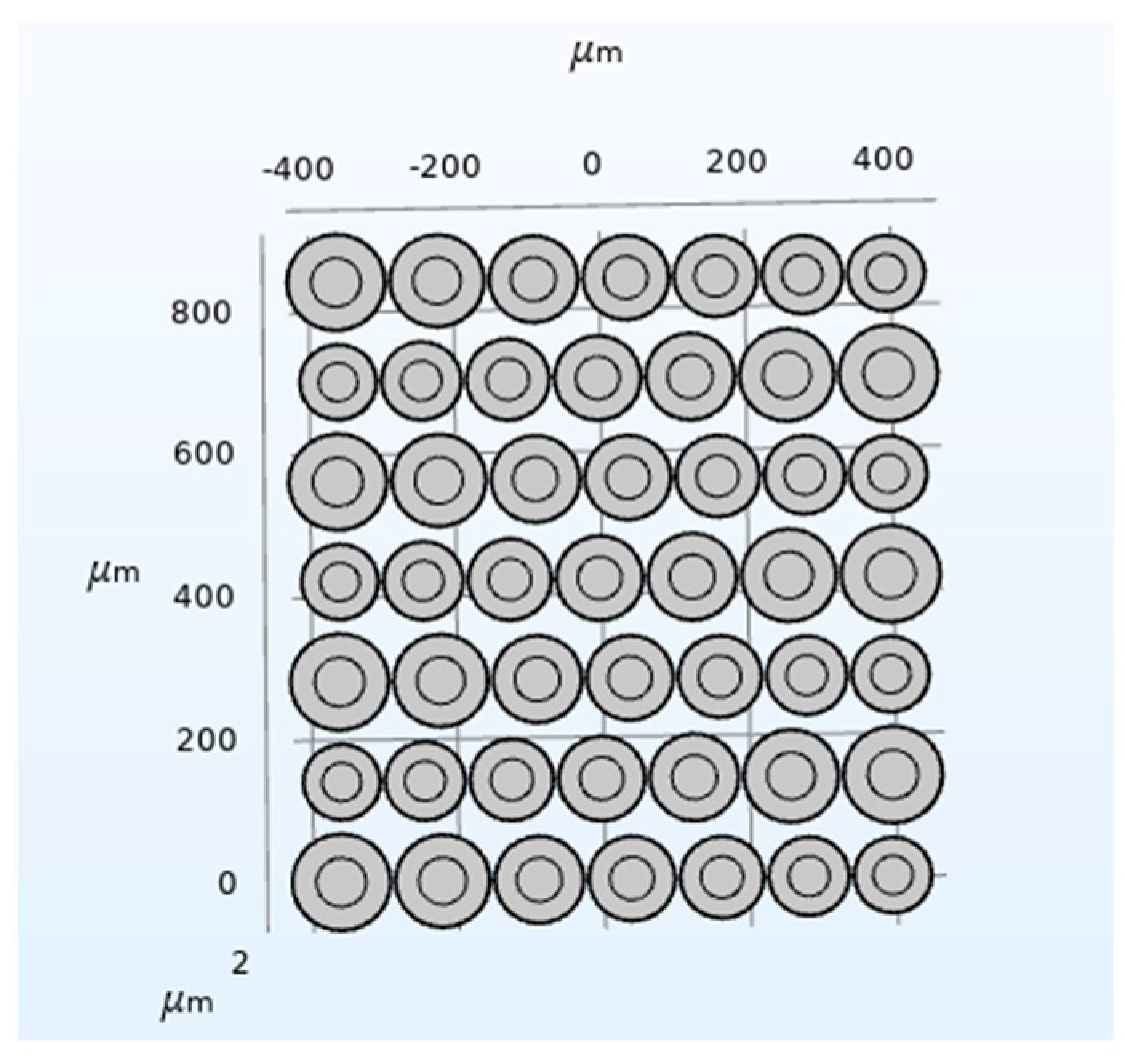


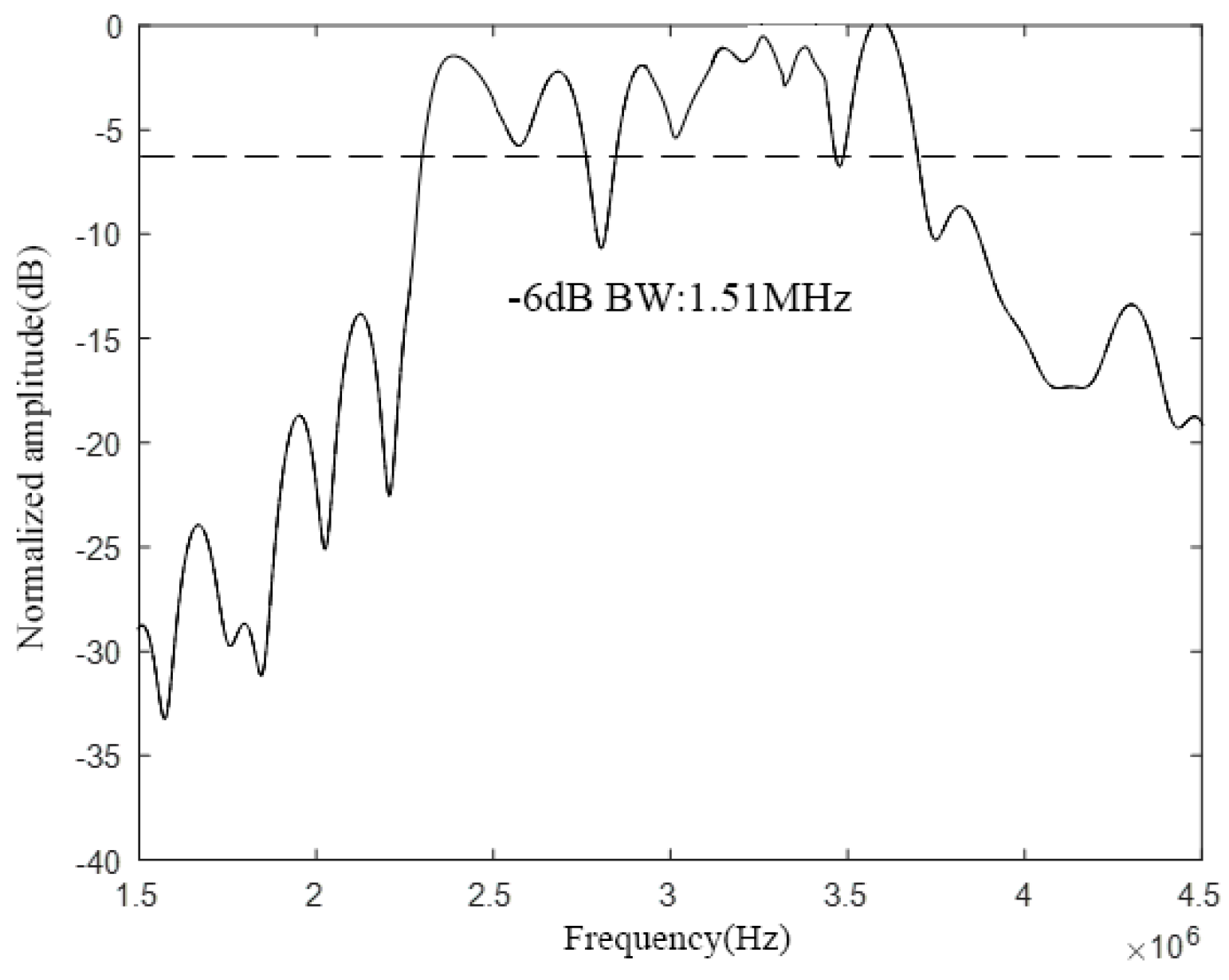
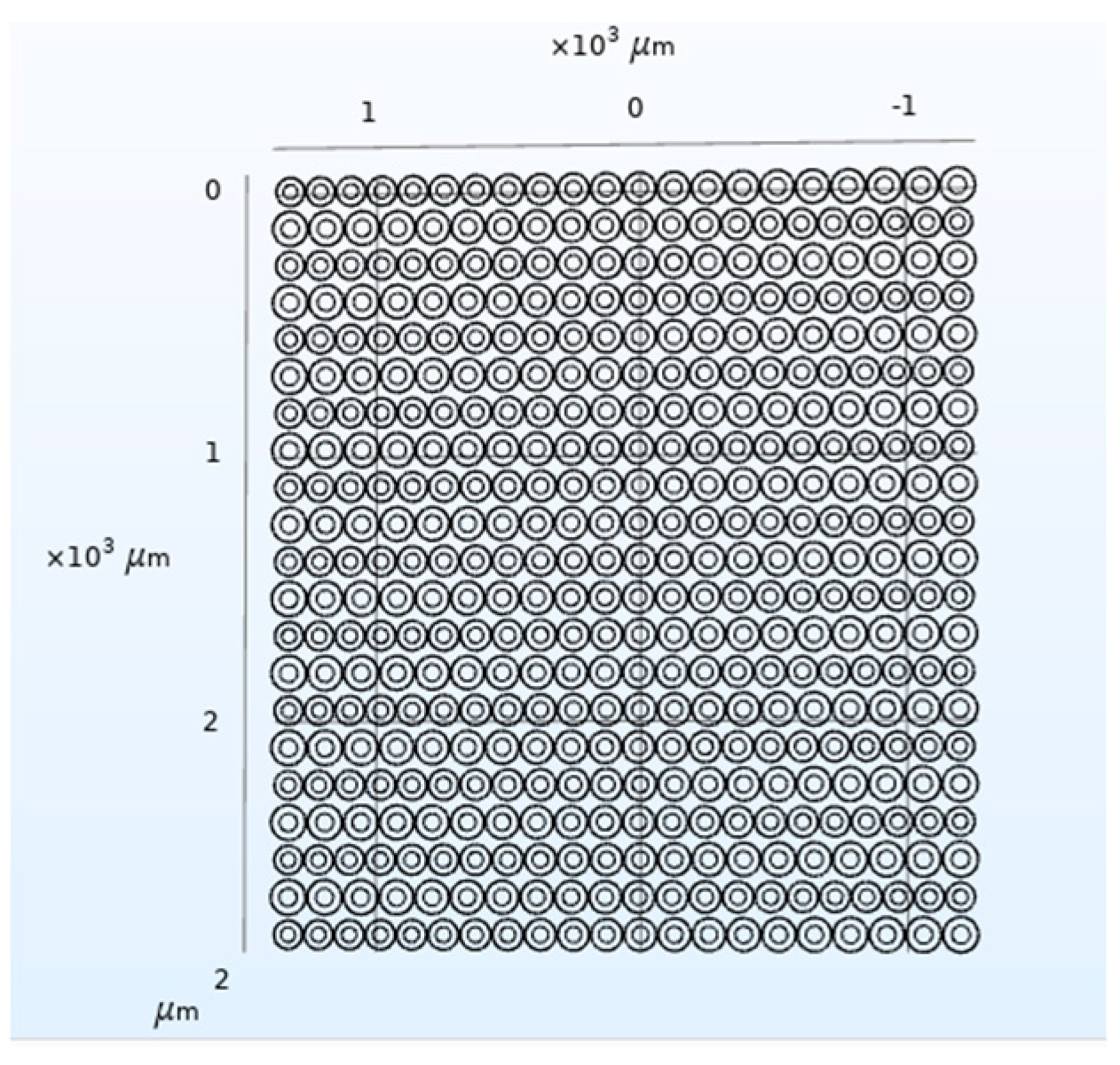

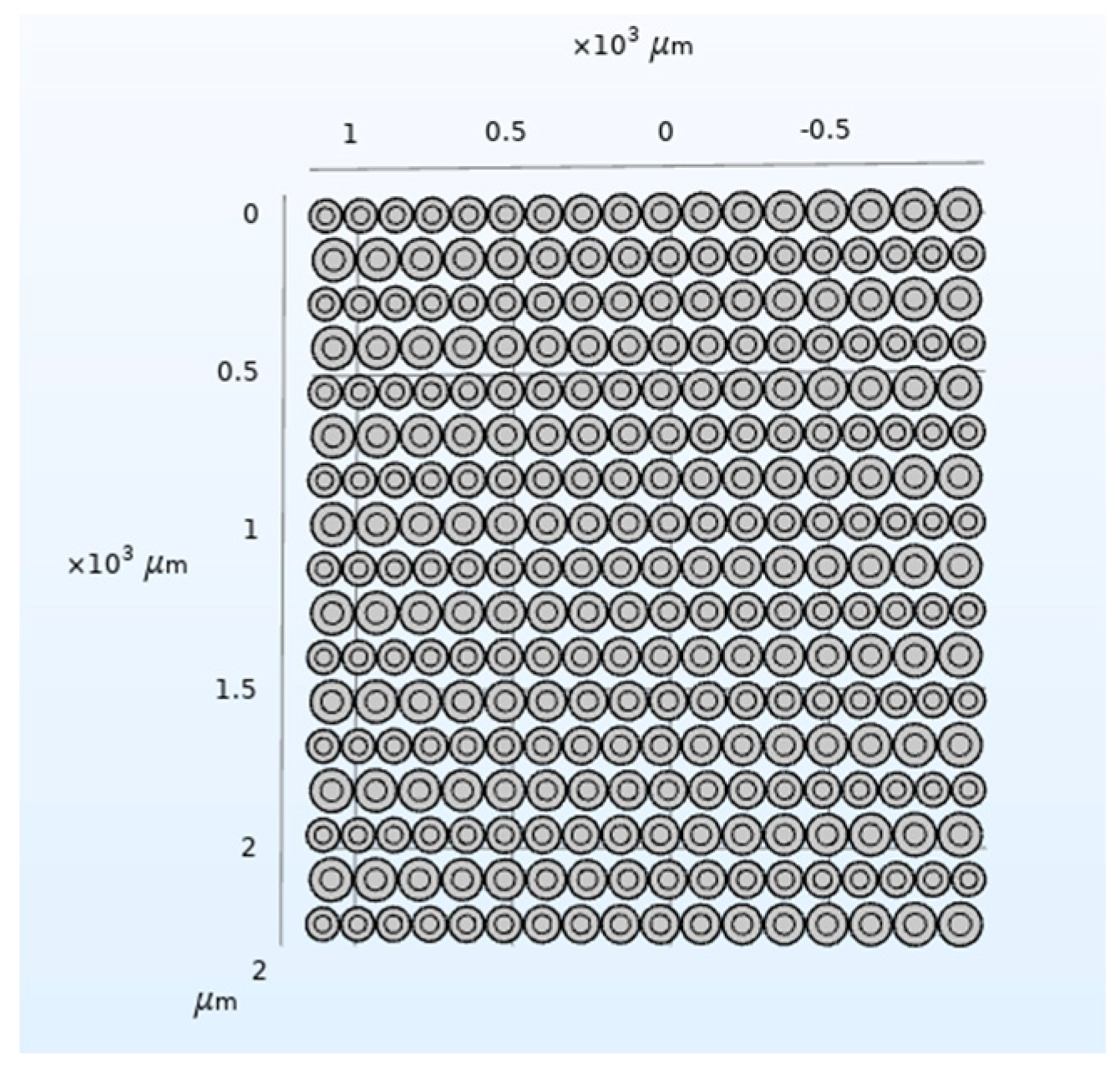
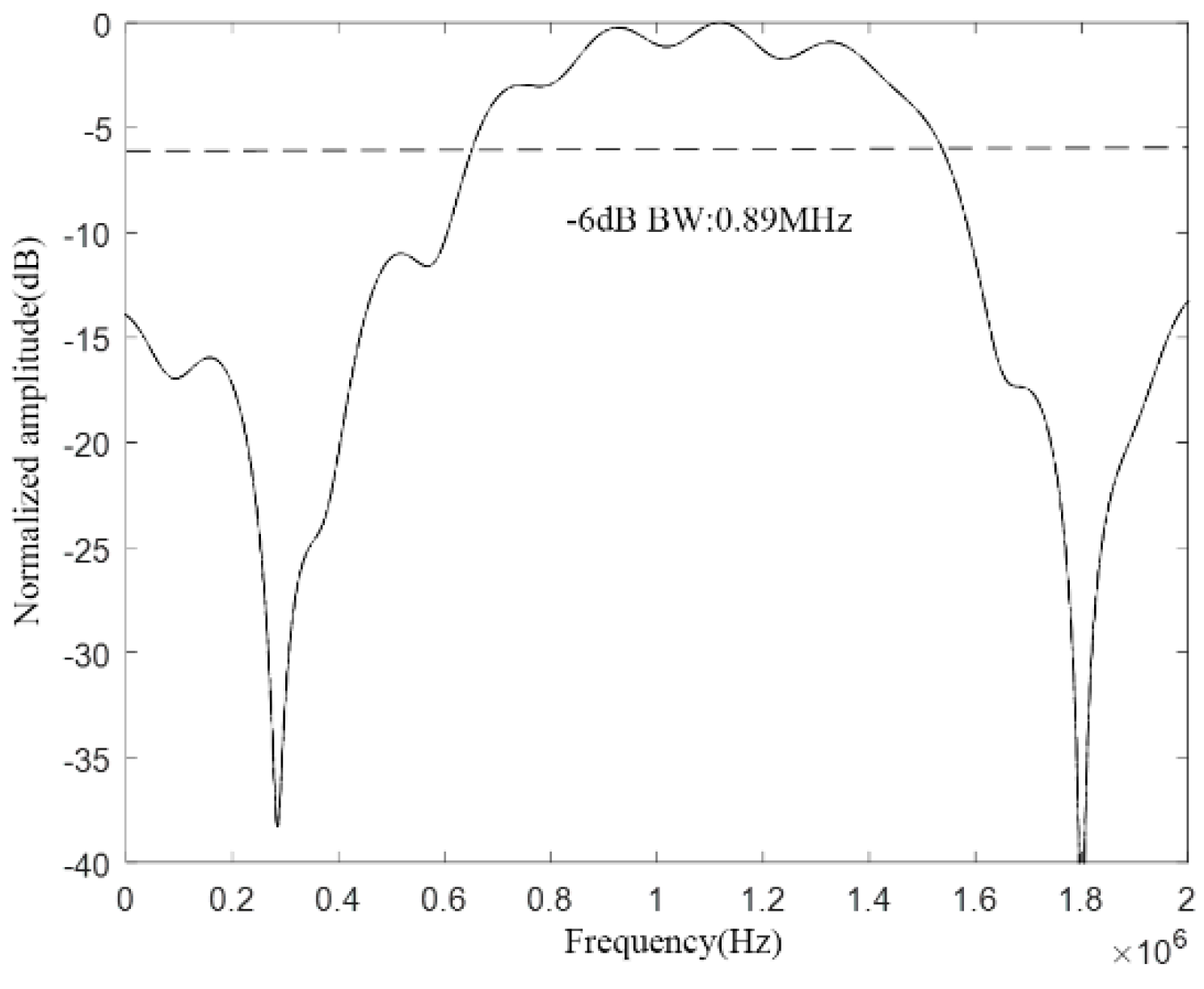
| Structure Unit | Used Material | Yang’s Modulus (GPa) | Poisson’s Ratio | Density (kg/m3) |
|---|---|---|---|---|
| Electrode | Al | 70 | 0.350 | 2700 |
| Membrane | Si | 169 | 0.299 | 2332 |
| Cavity | Vacuum | 0 | 0 | 0 |
| Insulation | SiO2 | 72 | 0.170 | 2200 |
| Underlay | Si | 169 | 0.299 | 2332 |
| Cell One | Cell Two | Cell Three | ||||
|---|---|---|---|---|---|---|
| Structure Unit | Radius (μm) | Thickness (μm) | Radius (μm) | Thickness (μm) | Radius (μm) | Thickness (μm) |
| Electrode | 120 | 0.2 | 60 | 0.2 | 30 | 0.2 |
| Membrane | 240 | 41.6 | 120 | 10.4 | 60 | 2.6 |
| Cavity | 236 | 0.24 | 116 | 0.24 | 56 | 0.24 |
| Insulation | 240 | 0.1 | 120 | 0.1 | 60 | 0.1 |
| Underlay | 240 | 0.4 | 120 | 0.4 | 60 | 0.4 |
| Cell One | Cell Two | Cell Three | ||||
|---|---|---|---|---|---|---|
| Structure Unit | Radius (μm) | Thickness (μm) | Radius (μm) | Thickness (μm) | Radius (μm) | Thickness (μm) |
| Electrode | 29.5 | 0.2 | 30 | 0.2 | 30.5 | 0.2 |
| Membrane | 59 | 2.6 | 60 | 2.6 | 61 | 2.6 |
| Cavity | 55 | 0.24 | 56 | 0.24 | 57 | 0.24 |
| Insulation | 59 | 0.1 | 60 | 0.1 | 61 | 0.1 |
| Underlay | 59 | 0.4 | 60 | 0.4 | 61 | 0.4 |
| Cell One | Cell Two | Cell Three | Cell Four | Cell Five | ||||||
|---|---|---|---|---|---|---|---|---|---|---|
| Structure Unit | Radius (μm) | Thickness (μm) | Radius (μm) | Thickness (μm) | Radius (μm) | Thickness (μm) | Radius (μm) | Thickness (μm) | Radius (μm) | Thickness (μm) |
| Electrode | 29 | 0.2 | 29.5 | 0.2 | 30 | 0.2 | 30.5 | 0.2 | 31 | 0.2 |
| Membrane | 58 | 2.6 | 59 | 2.6 | 60 | 2.6 | 61 | 2.6 | 62 | 2.6 |
| Cavity | 54 | 0.24 | 55 | 0.24 | 56 | 0.24 | 57 | 0.24 | 58 | 0.24 |
| Insulation | 58 | 0.1 | 59 | 0.1 | 60 | 0.1 | 61 | 0.1 | 62 | 0.1 |
| Underlay | 58 | 0.4 | 59 | 0.4 | 60 | 0.4 | 61 | 0.4 | 62 | 0.4 |
| w | 20% | 50% | 80% |
| The number of different cells required | 7 | 9 | 21 |
Publisher’s Note: MDPI stays neutral with regard to jurisdictional claims in published maps and institutional affiliations. |
© 2021 by the authors. Licensee MDPI, Basel, Switzerland. This article is an open access article distributed under the terms and conditions of the Creative Commons Attribution (CC BY) license (https://creativecommons.org/licenses/by/4.0/).
Share and Cite
Wang, H.; Huang, X.; Yu, L.; Ding, Q.; Zhang, H.; He, C.; Zhang, W. Hybrid Cell Structure for Wideband CMUT: Design Method and Characteristic Analysis. Micromachines 2021, 12, 1180. https://doi.org/10.3390/mi12101180
Wang H, Huang X, Yu L, Ding Q, Zhang H, He C, Zhang W. Hybrid Cell Structure for Wideband CMUT: Design Method and Characteristic Analysis. Micromachines. 2021; 12(10):1180. https://doi.org/10.3390/mi12101180
Chicago/Turabian StyleWang, Hongliang, Xiao Huang, Lijun Yu, Qi Ding, Hanqiang Zhang, Changde He, and Wendong Zhang. 2021. "Hybrid Cell Structure for Wideband CMUT: Design Method and Characteristic Analysis" Micromachines 12, no. 10: 1180. https://doi.org/10.3390/mi12101180






